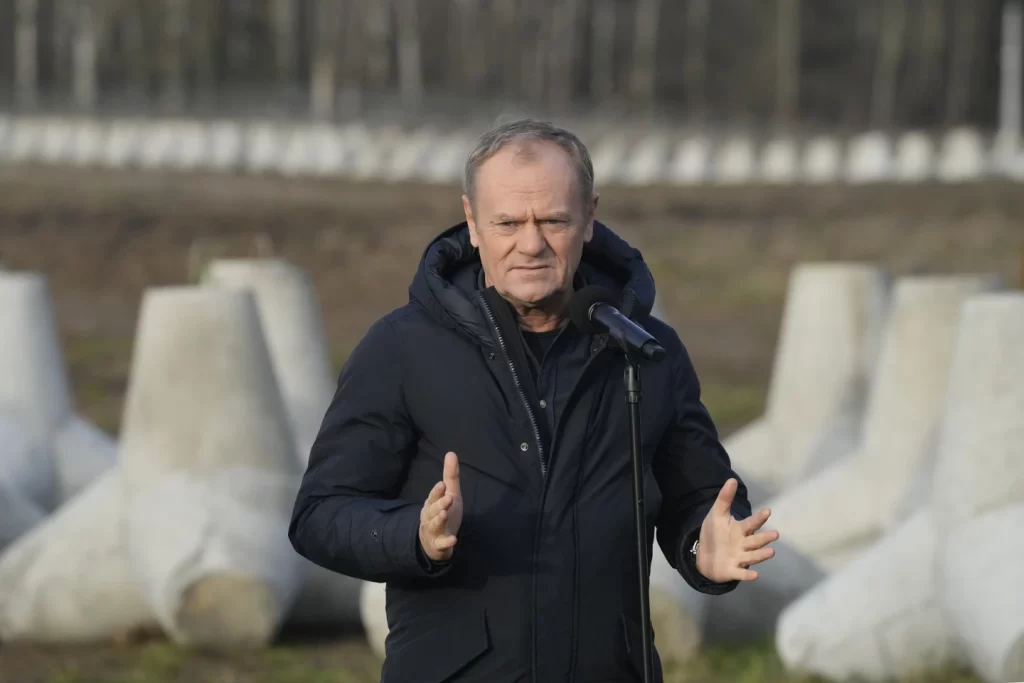Prime Minister Donald Tusk inspected Poland’s massive border fortification project Saturday along the frontier with Russia’s Kaliningrad region, calling the defensive installations “an investment in peace” as his country prepares to assume the European Union presidency.

The East Shield system, estimated to cost at least 10 billion zlotys ($2.5 billion), will eventually stretch approximately 800 kilometers along Poland’s borders with Russia and Belarus. “The better the Polish border is guarded, the more difficult it is to access for those with bad intentions,” Tusk said at a news conference, standing before concrete anti-tank barriers.
The project, which Poland calls Europe’s largest fortification effort since World War II, integrates “hedgehog” anti-tank barriers with natural obstacles and includes threat detection systems, forward bases, logistics hubs, warehouses, and anti-drone capabilities. Tusk indicated plans to extend the system to protect the Baltic states of Estonia, Latvia, and Lithuania.
Poland’s initiative comes as Western officials accuse Russia of conducting hybrid attacks against the West, including sabotage, weaponized migration, and disinformation campaigns. Tusk also proposed this week that Poland conduct joint naval patrols with Nordic and Baltic countries in the strategic Baltic Sea following suspected undersea cable sabotage.
The defensive push reflects Poland’s emergence as a leading European security voice at a time when France and Germany face internal political challenges. Poland plans to spend 4.7% of its GDP on defense next year, among NATO’s highest rates, as European leaders express concern about potential changes in U.S. support under incoming President Donald Trump.
“Everything we are doing here — and we will also be doing this on the border with Belarus and Ukraine — is to deter and discourage a potential aggressor,” Tusk said. “The whole of Europe is observing these investments and our actions with great satisfaction and will support them if necessary.”



